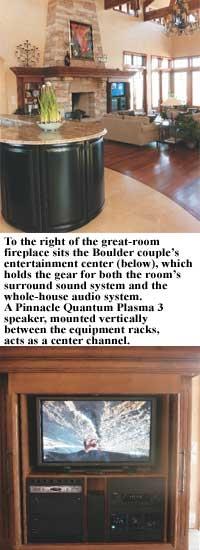Installations: Mile-High Fidelity

That might be an exaggeration, but even the homeowners - a money manager and his now-retired bond-trader wife - acknowledge the level of diplomacy required to accommodate their different agendas. Music is everything to the wife, who rarely watches TV but wanted widespread access to her music collection and cable music and radio stations. Contrarily, TV is the preeminent interest of the husband, who envisioned watching sports, TV series, and movies on a bigscreen set, enveloped in surround sound.
There were many technical issues because of the scale of the job, which involved a structured-wiring system, 12 zones of audio, a wired/wireless computer network, an extensive PBX telecommunications system, and a security system with closed-circuit TV. But maybe the biggest challenge for the installers was educating the owners, and their builder/architect, about what they could actually achieve within the project's $60,000 budget.
"We'd been through a parade of model homes that had whole-house audio systems, but we assumed it would cost way more than I was comfortable spending," says the husband. "David came in, took our blueprints, and came up with a proposal that was within our budget, and I liked what he was proposing."
David recalls that Adam and he had to explain to the homeowners what his firm was capable of and what their options were: "We said we'd first take care of the structured wiring and the basic infrastructure of the home and then give them the music features they wanted so they could have whole-house audio." He also had to explain how what they were proposing differed from the "phone and cable" budget in the builder's proposal. "They didn't understand the difference between what he did and what we did as it pertained to the A/V and networking plans. We needed to let them know what we'd be handling so they weren't paying for it twice," explains David.
- Log in or register to post comments



































































